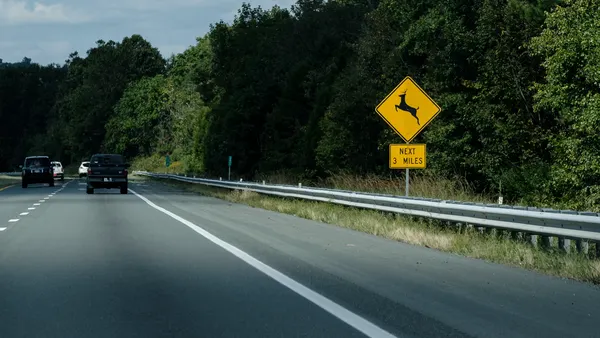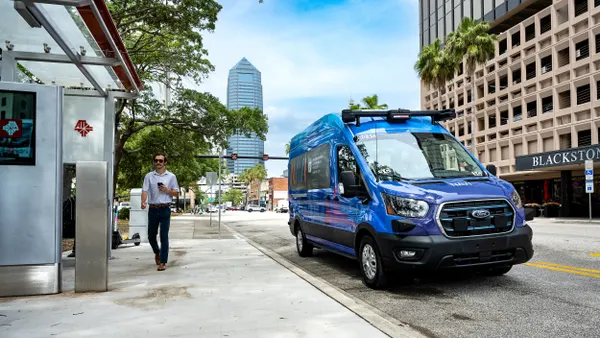Dive Brief:
- Lyft is introducing a new "Green Mode" that will let passengers request an electric or hybrid vehicle as part of the platform’s goal to get a billion rides per year in electric cars by 2025. The green option is live in Seattle and will spread to other cities soon.
- Drivers will be able to access electric vehicles (EVs) through Lyft's Express Drive program, which allows users to rent vehicles to drive for Lyft.
- Lyft announced this fall it would go carbon neutral by moving to renewable energy and purchasing carbon offsets to "neutralize the remainder of [its] emissions." As part of that goal, the company says all EV charging will be done with renewable energy.
Dive Insight:
It’s unclear how many EVs Lyft already has on its platform, but COO Jon McNeill told Fast Company that there's already a substantial share in Seattle. McNeill said this marked "the first time we’re meaningfully scaling electric vehicles into our fleet," which came in response to both drivers and passengers telling the company it wanted a green option.
Still, the program will be hard to scale up if drivers do not already have EVs or don’t want to get them through the Express Drive program. Electric cars were just 2% of all U.S. car sales last year, and although cities and companies are investing more in charging infrastructure, that could be a barrier to driver acceptance. (DC taxi drivers, for example, have complained about the difficulties in driving electric cars). Lyft, meanwhile, is touting that, with EVs cost about 50% less than gas-powered vehicles to operate, drivers could save hundreds of dollars a month with the greener option.
Lyft is clearly banking that the program will encourage its users to opt for electric vehicles, thus getting more of them on the road. McNeill also told Fast Company that Lyft would encourage utilities to invest in more chargers in cities with green mode. Uber similarly launched an "EV Champions Initiative" this fall in seven cities, offering cash incentives to drivers who switch to electric cars. Through the program, Uber also tweaked its app to make it easier for EV drivers to preview their rides, alleviating range anxiety.
While the total environmental impact of ride-hailing services is still being studied, the leading companies are looking to clean up their operations in response to criticism that they’re putting more cars on the road. Besides offering clean fuel options, both Uber and Lyft have invested in bike and scooter sharing services and are adding transit directions to their app to give riders more options.










